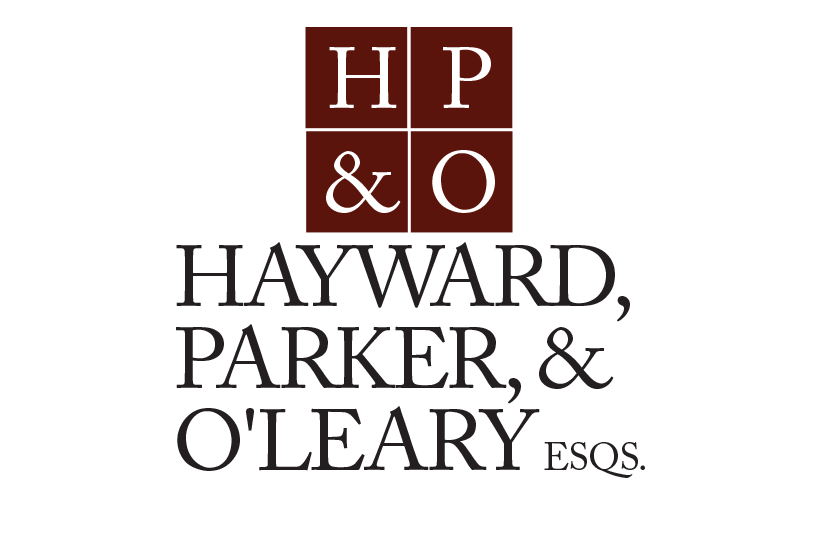Skilled Bankruptcy Attorneys Discuss What Constitutes Property of the Bankruptcy Estate
A bankruptcy estate is created upon the filing of a bankruptcy petition. The only assets available for liquidation in a Chapter 7 Bankruptcy are those which are classified as “property of the bankruptcy estate”. Bankruptcy clients of Hayward, Parker & O’Leary, including those in southern Ulster County communities such as New Paltz and Ellenville,are generally surprised at how broadly this term is defined.
The Bankruptcy Code defines property of the estate as “all legal and equitable interests” that the debtor has in pretty much anything. Even property that is claimed as exempt continues to be property of the estate even after the time to object to the exemption claim (generally 30 days after the closing of the Chapter 7 Section 341 Meeting} has expired. If the property is fully exempt the Trustee will not administer it, but if it is only partially exempt the Trustee can sell it, pay the debtor the amount of the exemption and distribute the remaining funds to creditors.
Examples of Property of the Estate
In addition to the obvious, tangible things such as real estate and automobiles, etc., property of the estate includes many other things that are neither obvious nor tangible. A few examples are:
- Potential personal injury claims, providing the event causing the injury occurred prior to the bankruptcy filing;
- Tax refunds for pre-petition years, even if the tax returns have not been filed prior to the bankruptcy filing;
- Entitlements to inheritances and marital property settlements that arise within 180 days after the bankruptcy filing;
- Commissions collectible by real estate brokers for contracts of sale signed prior to the bankruptcy filing;
- Annual renewal commissions collectible by life insurance agents on policies entered into prior to the bankruptcy filing;
- The right to exercise stock options;
- Any property put in your name by loved ones for “estate planning purposes”;
- Intellectual property, including copyrights and patents;
- Future “residual payments” collectible by actors and musicians;
- Anything that the debtor has a fractional ownership interest in.
Examples of What is Not Property of the Estate
Without reciting the many esoteric property interests that are not property of the bankruptcy estate, a few commonplace examples are:
- Spendthrift trusts—a trust created by another person to (1) provide funds for the beneficiary, and (2) protect said funds from the reach of creditors of the beneficiary;
- ERISA-qualified retirement / pension plans and 401 K plans
- Pawned personal property-tangible personal property pledged as collateral for a loan from a licensed lender, providing (1) the property is in possession of the lender, (2) there is no obligation to repay the loan or redeem the property, and (3) neither the debtor nor the Trustee has redeemed the property in a timely fashion.
When Is Debtor’s Property No Longer Property of the Bankruptcy Estate?
Debtor’s property continues to be “property of the estate”, subject to the Chapter 7 Trustee’s administration, until such time as:
- The Trustee has abandoned the property;
- The Trustee has filed a No Asset report and the Court has closed the case.
A Trustee abandons an asset when it cannot be liquidated for an amount sufficient to yield a meaningful distribution to unsecured creditors. Sometimes the value of the asset in question is minimal, the quality of its title is questionable, or it is fully encumbered by non-avoidable liens. Other times the income tax consequences to the estate of selling the asset would eat up all of the sale proceeds. Title to property that is scheduled in debtor’s petition and abandoned by the Trustee reverts to the Debtor, subject to the same liens or encumbrances or legal infirmities that existed when the case was filed.
If an asset is not scheduled in debtor’s petition or disclosed to the Trustee it remains property of the estate in perpetuity, (1) even after the case is closed by the Court, and (2) even though the Trustee is unaware of the asset’s existence. This scenario commonly plays out when a debtor fails to disclose a personal injury claim that arose prior to the bankruptcy filing. Such a debtor is usually presented in the State Court personal injury lawsuit with a motion to dismiss the case on the grounds that only the Trustee has standing to bring the lawsuit, since the claim is property of the estate that can be administered only by the Trustee.
